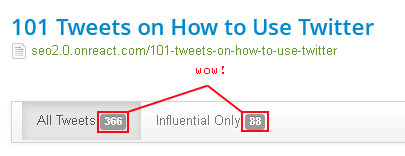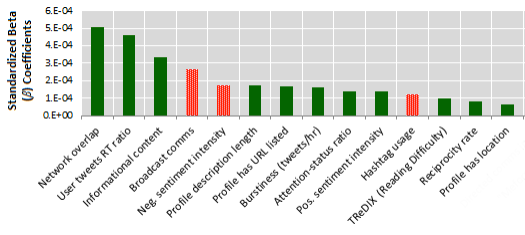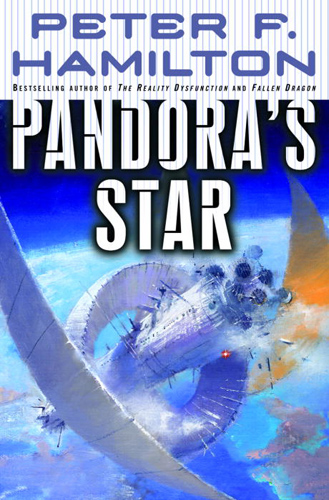Recently I revisited the concept of flagship content which I have successfully implemented numerous times in the past. Back then, though, it was a bit fuzzy. I created it more intuitively without analyzing how I did it exactly. Last week I had to explain it again to a consulting client, so I came up with an easy to understand way of interpreting it.
Truly outstanding content can be planned based on
- size
- breadth
- depth
- length
These four types may sound a bit abstract at first, so I will explain more clearly below with examples. Let’s start with a metaphor: why “flagship” content and not just “great“? — the type of content Google advises you to offer all the time. The word “great” is by now almost as meaningless as the word “nice.” When everybody creates awesome content, great or nice content becomes the standard or even subpar. Also
I’m not here to repeat after the Google overlords who have spread as the number one SEO advice the “just create great content” mantra.
Now that everybody has watched at least one Pirates of the Caribbean movie the meaning should be clear: the flagship is perhaps the biggest, fastest and most impressive ship of your entire fleet. That’s why it carries the flag. Your blog or website are also like a fleet. It’s full of ships. e.g. pieces of content. But which one of these stands out the most? There are at least four types of different flagship content you can create.
1. Size
Yeah, sheer size matters. An ebook with 10, 20 or 100 pages stands out by sheer size. In the early days of business blogging, we did a lot of lists. The bigger the list the better was the rule back then. So, top 10 list would be less effective than top 20 or top 100. It’s not that simple anymore.
Content over-saturation or “content shock” has created a shorter attention span for potential readers. You do not want to check out 100 ways, 100 tools or 100 blogs like you did several years ago. That’s why
Sheer size doesn’t automatically win the hearts and minds of a potential audience. The size must be reasonable. It’s form follows function here.
Some of my classic lists still work with 100+ items. 101 Tweets on How to Use Twitter, for example, has gone viral twice — once after publication and a second time years later after an insignificant update. Don’t confuse size with length though. I will explain length below.
You can have just one item explained in such length that it outperforms a 100 items list, which is not necessarily long because the items are very short. The question though is “does it make sense?”
2. Breadth
How to measure the breadth of content? How do you create flagship content that is so broad people want to share it? You can take it literally: imagine an overview of the features of the latest highest rated smartphones. Smartphone models are changing so often (twice a year it seems) that many people need such overviews and comparisons. How do you compare them at once?
You can make a table that displays the features horizontally or side by side. You can show the pros and cons so that the readers can see at a glance which one is the “best” or at least read about their personal favorite based on those features. You can even use horizontal scrolling for that purpose.
3. Depth
You know what an in-depth analysis is don’t you? You also know what shallow content is I hope. Depth is like an invisible third dimension when it comes to content. You can sense it, but you can not actually measure it solely based on the size, breadth or length of content. You can compile a meaningless list of 100 items, but cover just one topic in-depth.
A scientific study is often another form of deep content even if the results prove what everyone already expects.
So depth is about understanding complex issues. It’s not about novelty, like in the case of breadth or length but the actual message may be novel as it uncovers some hidden truth that lies below the surface of the obvious.
Above you see a graph showing factors of Twitter follower growth deducted in a scientific study. The article is concise but the depth of insight is impressive, especially learning that using many hashtags will hurt your follower growth, which might come as a surprise to many unskilled SEO practitioners.
4. Length
Length is not the same as size but can easily be mistaken for it. We are in the middle of a so-called “long-form content” trend. As with size, it’s again about form following function. A list of 100 tools to perform one specific task is not helpful as long as you have to check out all of them to find your solution.
An essay about the cuteness of cats is not as effective as a cute cat image (see above).
So length stands out positively, when it makes sense. When it comes to science, the actual scientific paper is often very long and full of data hidden behind cryptic terms nobody besides an elite can really understand. That’s a surefire method to prevent most people from reading it.
My favorite example of successful length comes from print media. The best paid UK science fiction author is allegedly Peter F. Hamilton. I ignored him for years despite voraciously reading sci-fi books because his image was that of a superficial Space Opera writer who only focused on action. I could not have been more wrong!
Recently I read two 1,000+ pages long books by Hamilton, Pandoras Star and Judas Unchained. It’s basically one long story divided up into two books – The Commonwealth Saga
The novels were so vivid, full of detail and gripping that reading 1,000+ pages was not a problem. I think I finished both in a week each while reading solely in the morning, evening and on the weekends. Indeed, I was quite disappointed when I realized that the second book was the final novel, as I expected a trilogy.
Length does make sense when it’s enjoyable.
Doesn’t this refer to size, you might ask? That’s the most intriguing thing. I bought the British original of Pandoras Star which is the size of a brick but looks about the same as 500-page books from other authors. The paper seems to be thinner in this version. I read the American paperback version of Judas Unchained which looks particularly small and manages to cram 1,235 pages of the original into just 1,008 tightly printed pages using small type and barely any margins.
So, neither book intimidates by sheer size; they really camouflage them. You won’t notice the page number unless you look them up. They look like your average sci-fi novel from the outside. That’s why it’s about length, not size, in this case. The intimate relationship you have with each of the characters in these books warrants the length. They story works for both reader and writer because it’s so long.

Analyze over 20 different technical SEO issues and create to-do lists for your team while sending error reports to your client.







